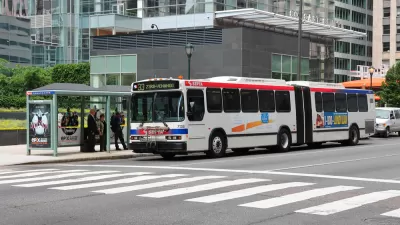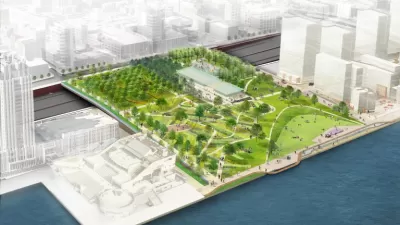Pennsylvania legislation would make it harder for communities to regulate the new wireless network infrastructure.

Jim Saksa reports on the tensions arising between wireless network builders and local municipalities as 5G networks expand on small-cell infrastructure that relies on smaller antennas and connection boxes. As companies like Crown Castle International Inc. scramble to get this infrastructure up ahead of the release of 5G smartphones next year, some towns and cities are objecting to what gets put where.
State legislation in Pennsylvania would streamline the application review and approval process and make it easier for companies like Crown Castle:
The bill would curtail local government’s ability to regulate the placement of small-cell infrastructure along public rights-of-way such as streets. It would effectively treat companies like Crown Castle as utilities — something Commonwealth Court recently ruled they are, reversing the Pennsylvania Public Utility Commission’s ruling that they were not — thus allowing them more leeway to do what they want in public spaces than other, non-utility companies are permitted.
Wireless infrastructure companies are going to start in areas most receptive to the new networks, primarily more populated areas. But supporters of the bill say a more uniform regulatory system will ensure that particular municipalities will not hold up development of the broader network. Opponents argue, however, that there should be a compromise because they are “not philosophically opposed to the idea of surrendering a bit of local control over the streetscape to speed along technological advancement,” says Saksa.
FULL STORY: Bill seeks to streamline faster wireless broadband, steamroll local control of the streetscape

Alabama: Trump Terminates Settlements for Black Communities Harmed By Raw Sewage
Trump deemed the landmark civil rights agreement “illegal DEI and environmental justice policy.”

Planetizen Federal Action Tracker
A weekly monitor of how Trump’s orders and actions are impacting planners and planning in America.

The 120 Year Old Tiny Home Villages That Sheltered San Francisco’s Earthquake Refugees
More than a century ago, San Francisco mobilized to house thousands of residents displaced by the 1906 earthquake. Could their strategy offer a model for the present?

In Both Crashes and Crime, Public Transportation is Far Safer than Driving
Contrary to popular assumptions, public transportation has far lower crash and crime rates than automobile travel. For safer communities, improve and encourage transit travel.

Report: Zoning Reforms Should Complement Nashville’s Ambitious Transit Plan
Without reform, restrictive zoning codes will limit the impact of the city’s planned transit expansion and could exclude some of the residents who depend on transit the most.

Judge Orders Release of Frozen IRA, IIJA Funding
The decision is a victory for environmental groups who charged that freezing funds for critical infrastructure and disaster response programs caused “real and irreparable harm” to communities.
Urban Design for Planners 1: Software Tools
This six-course series explores essential urban design concepts using open source software and equips planners with the tools they need to participate fully in the urban design process.
Planning for Universal Design
Learn the tools for implementing Universal Design in planning regulations.
Clanton & Associates, Inc.
Jessamine County Fiscal Court
Institute for Housing and Urban Development Studies (IHS)
City of Grandview
Harvard GSD Executive Education
Toledo-Lucas County Plan Commissions
Salt Lake City
NYU Wagner Graduate School of Public Service





























